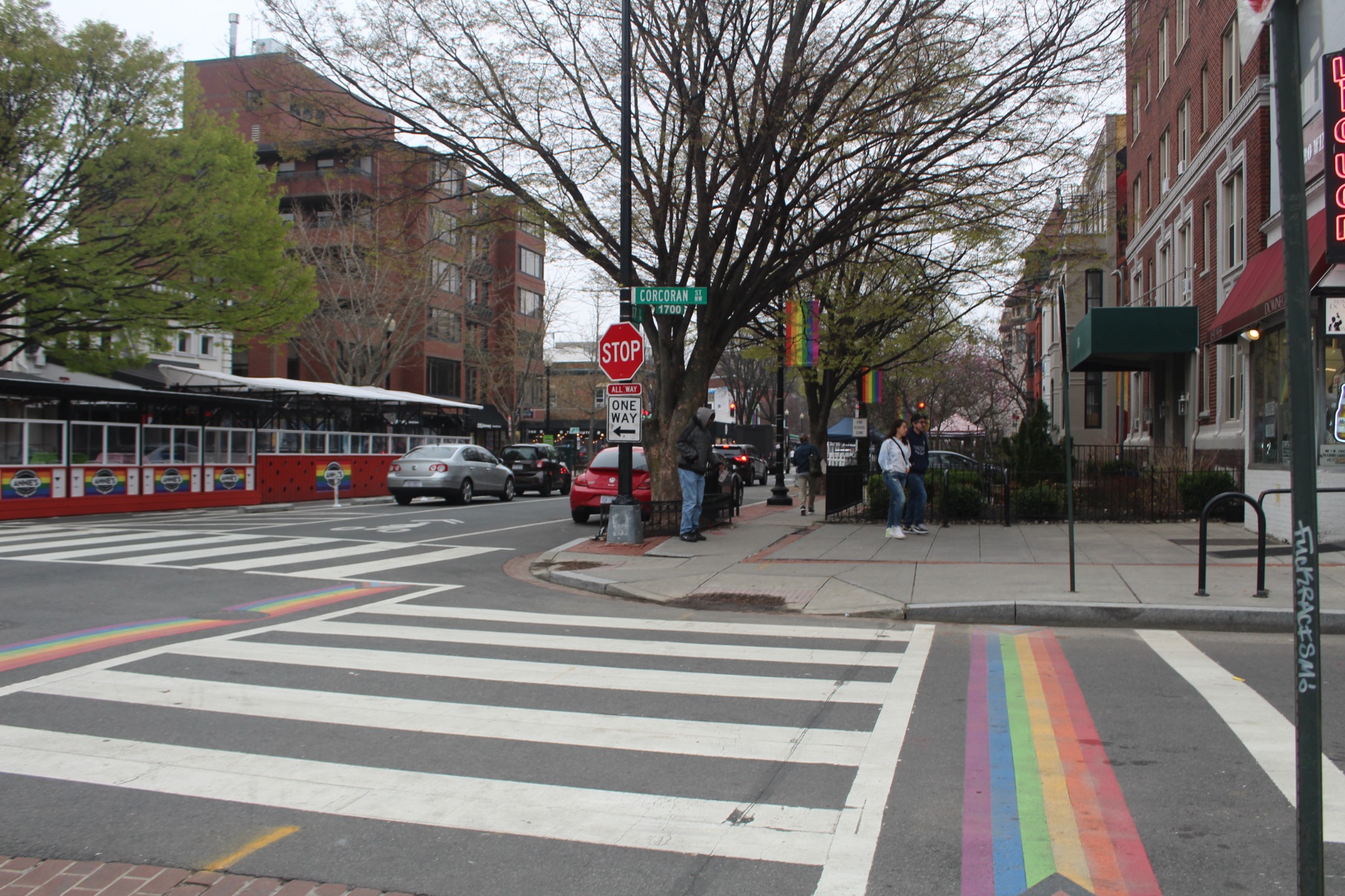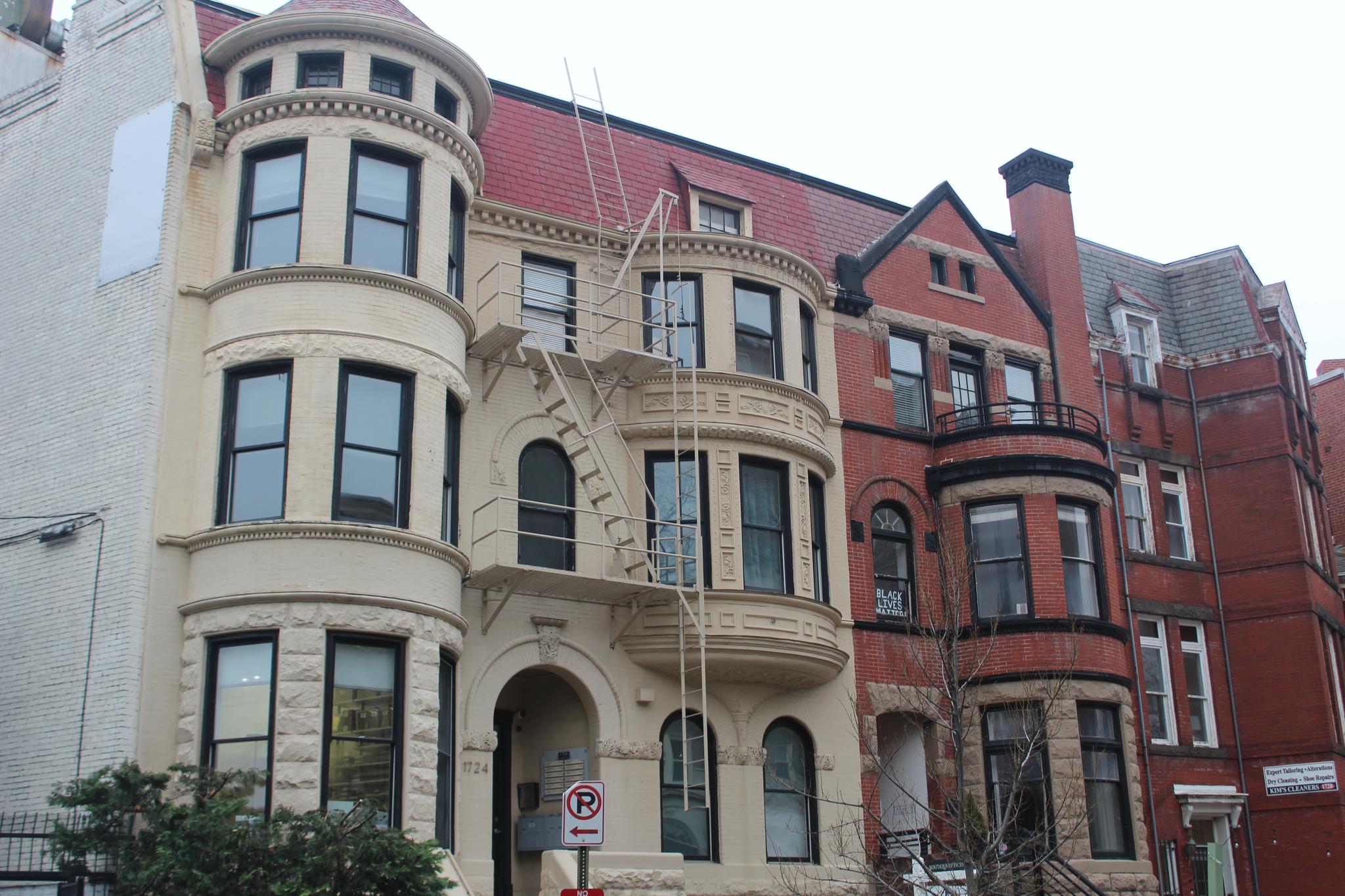A community in flux: Washington’s ‘gayborhood’ through the years
When Deacon Maccubbin was looking for gay community in Washington, he went to Dupont Circle.
Maccubbin knew Dupont first as an anti-war activist in the late 1960s, then as the owner of Washington’s first gay bookstore in the 1970s. Now at 79, Maccubbin considers Dupont the epicenter of LGBTQ community for most of his life.
Nicky Dawes is 16 and was looking for queer community after moving to Washington during their freshman year of high school. They found it on the debate team and in virtual Dungeons and Dragons groups.
When Dan Reed, 33, describes LGBTQ life in his 20s in the early 2000s, he refers to the Metro’s green line, spanning from Columbia Heights to Navy Yard.
Once hailed as Washington’s “gayborhood,” Dupont Circle was home to LGBTQ landmarks like the first pride parade, Maccubbin’s bookstore Lambda Rising and bars like Mr. P’s, the first gay bar in Washington. But after an emergence of activism and community building in Dupont Circle in the 1970s, LGBTQ spaces are largely declining.

The anti-war movement brings gay life to the surface: The ‘70s, ‘80s and ‘90s
Maccubbin was an anti-war activist and organizer in his hometown Norfolk, Va. when he was drafted. After coming out to his military superiors as gay, he booked a room in a boarding house in Dupont Circle for $15 a week.
“Dupont Circle, at that time, was the center of the counterculture. Not necessarily the gay center, although there were plenty of gay people here but it was the center of the counterculture and the anti-war movement,” Maccubbin said. “And it's where everybody came when they first came from other places to the district, they’d come to Dupont Circle first and foremost.”
Lou Chibbaro’s perspective of gay Washington comes from the workplace. Chibbaro has been a reporter with the Washington Blade, the country’s oldest LGBTQ newspaper, since the 1970s.
The Blade created a following and gave gay people, especially those who weren’t out yet, information about their community. There were few social groups in the ‘70s, Chibbaro said, and most information was in leaflets lodged in car windshields outside of gay clubs in Dupont.
Maccubbin owned a drug paraphernalia shop in Dupont. It was housed in 1724 20th street, a central space in the ‘70s for anti-war and LGBTQ organizing. It was where Maccubbin and his friends operated a switchboard where LGBTQ folks could call to get information about the city and where it was safe for them to go. It housed a gay youth group, the lesbian feminist newspaper “off our backs” and a drug offenders’ rights committee.

“We used to joke that the whole building was held together by all the wiretaps the FBI had on us,” Maccubbin said.
During a trip to New York City, he stumbled upon the Oscar Wilde Memorial Bookshop — the first gay and lesbian bookstore on the East Coast. As an avid reader, he always had trouble finding gay books. A librarian once told him that they stopped carrying the card catalog-listed gay books because people destroyed or stole them because they were too embarrassed to check them out.
With the vision of the Oscar Wilde shop, he decided to expand his store into Lambda Rising in 1974. Lambda Rising became the first gay bookstore in Washington and one of the most well-known ones to date.
Over the next decade, the store moved twice to bigger spaces in the neighborhood because it was so popular.
“From the very beginning, it was a community center,” Maccubbin said. “We had a mezzanine area that we didn't really use for merchandising, but we used it for organizations to meet … It was used as a place for authors to come and talk to their readers.”
Maccubbin also held Washington’s first pride parade as a block party in 1975 after wondering why he always had to travel to New York City to go to the annual pride parade. More than 40 years later, it’s now known as Capital Pride.
“I had never thrown a party that big before in my life,” Maccubbin said, laughing. “But there was some interest in that obviously, we had no idea how many people would show up. As it turned out, 2,000 people came to the first party, now about a quarter of a million people come out every year.”
During the AIDS epidemic, which drastically changed LGBTQ life across the country, the “gayborhood” began to spread out. Chibbaro said he remembers sizable gay populations in Capital Hill, Adams Morgan, Mount Pleasant and in wards 7 and 8 in the ‘80s and early ‘90s.
As the city becomes more expensive, gay Washingtonians move: The 2000s
As a college student at the University of Maryland, Reed said he didn’t have any idea of what adulthood would look like as a queer person because there were so few examples in his community.
He eventually found that community in Dupont Circle bars and clubs, but it wasn’t until he was 21 that he was able to even access those spaces.
As rent prices skyrocketed in Washington, Dupont began to change. Reed said most of his friends shifted along the green line, between Columbia Heights and Navy Yard, as Dupont grew increasingly expensive.
“If you were not inside of that universe … it was isolating,” Reed said. “I bought a condo in downtown Silver Spring, [Md.] when I was 26 and I was dating, and it was exceedingly difficult to get boys to come visit me in silver spring.”
As Reed’s perception of gay community shifted from Dupont, he discovered gay suburban life.
Now 33 and living in Montgomery County, Reed said queer community in the suburbs is just as lively as in the city, even if it doesn’t fit the preconceived notion of gay life.
While Reed said the loss of historic LGBTQ spaces are “bittersweet,” he feels the growing queer suburbia is encouraging because there is more of an effort to strengthen community ties for LGBTQ folks outside of cities.
“I don't know if there's ever going to be one gayborhood in D.C. again,” Reed said. “But it seems like there are still going to be dedicated spaces, which are important, whether it's individual bars, or restaurants or places that might have a drag night or having something smaller; small town and suburban pride festivals.”
The pandemic turns community on its head: 2020 and onward
When Dawes, a junior in high school, moved to Washington about three years ago from rural Missouri, the first place they looked for any kind of community was on the debate team.
After starting their freshman year at the School Without Walls, Dawes said the small school didn’t feel like it had a strong queer community. When the pandemic forced school online, Dawes, who identifies as agender, said they found themselves with more time than ever to grapple with their identity and noticed the same in their peers.
Teens flocked to social media platforms like TikTok and Instagram to find community while quarantined, and Dawes found community online through a Dungeons and Dragons club with other queer-identifying teens.
Dawes also found queer community through activism. They participate in art activism through local nonprofit program Fly By Light and by organizing with their school’s Gender Sexuality Alliance.
For Dawes, activism, more than any physical neighborhood, is queer community.
A vision for the future of queer community in Washington
When Jo McDaniel and Rach Pike were looking for a spot for their new queer bar, making the bar accessible for as many queer folks as possible was a priority.
As You Are bar is a hybrid club, coffee lounge and meeting spot. It opened near the Eastern Market Metro stop on 8th Street in March.
“Northwest is so inundated with opportunities and queer nightlife,” Pike said. “We really want to bring that to the side of the city, what we've learned is that a large contingent of the more marginalized queer community like women, trans, [nonbinary] and Black and brown people live on this side of the city more often because it is more affordable.”
There are few remaining LGBTQ spaces outside of Northwest Washington — most are concentrated between Dupont, Adams Morgan and Shaw. But this wasn’t always the case. Eighth Street in southeast Washington was once known as “The Gay Way” in the late ‘60s and early ‘70s with bars like Phase One, Club Madame and Round Up on the same block. After the turn of the century, these places had almost completely disappeared.
McDaniel and Pike said their new bar is “bringing the queerness back to the street.”
“I don't think we're looking to make this the gayborhood,” Pike said. “What we're looking to do is bring queerness into a space that can fit in the neighborhood as is, with the people that are already there that want this resource.”
As Washington’s LGBTQ population continues to spread out, some mourn the loss of the neighborhood that started it all. But for others, the gradual shift doesn’t mean Dupont Circle is less gay, it means the whole city is becoming increasingly LGBTQ-friendly.
“For a long time, at least, I would have said that the gay community didn't change in Dupont Circle, it changed everywhere else. You don't have to live in Dupont Circle anymore. There was a time when if you were gay, and you wanted to live in Dupont Circle and nowhere else or parts of Capitol Hill,” Maccubbin said. “But as things progressed … you can pretty well live anywhere you want, safely and enjoy it. That’s the biggest change, [but] Dupont Circle is still very gay.”
Post a comment